Summary
Customer experience has become a key competitive battleground, with insurers focusing on technology to deliver faster and more personalized service [1]. Many companies are now moving beyond simply testing AI and are putting it into full-scale use to get ahead of the competition [2].
A chatbot for insurance is a critical tool for meeting these modern challenges. Chatbot solutions help streamline the claims process, offer AI personalization interactions to policyholders, and make internal operations more efficient. The market for these tools is growing quickly, with projections showing it will reach $4.5 billion by 2032 [5].
This article provides a comprehensive list of the top 10 AI chatbots for insurance that can help insurance companies succeed and grow.
Top 10 AI Chatbots for the Insurance Industry
| Software Name | Description | Key Features |
|---|---|---|
| Ringover AI Assistant | An AI agent designed for omnichannel customer support and contextual conversations. | 24/7 availability across voice, SMS, chat; Integrates with CRM and business-data sources to provide full context; Smart routing to human agents when needed. |
| Solvemate | A conversational AI platform used to automate customer support and improve first-contact resolution | Contextual conversations that understand user intent; Integrations with CRMs, policy administration systems, and REST APIs; Self-service for policy questions, claims status, payments, and renewal notices. |
| ChatGPT Enterprise | A powerful large-language model platform (by ChatGPT / OpenAI) which insurers can train on internal docs for agents and brokers. | Custom training on policies, procedures; Generate training materials, summarize documents, draft communications; Secure enterprise-grade environment. |
| LivePerson | A robust conversational-AI platform (by LivePerson) widely used in the insurance industry for large-scale chatbots, analytics and conversational automation. | Multi-channel support (web, mobile app, SMS); Advanced analytics into insurance-specific intents and outcomes; Scalable automation for sales & claims support. |
| Intercom | A conversational engagement platform focused on proactive visitor engagement, lead qualification and routing–useful for insurance agencies and brokers. | Automated lead qualification via chat; Routing high-value prospects to sales agents; Integration with business tools/CRM for smoother workflow. |
| Tractable | A specialized AI tool for auto (and property) insurance claims assessment using computer vision–more of a backend/claims-chatbot hybrid than a pure conversational bot. | Photo/image analysis of damage with pixel-level precision; Automates triage, estimates, reduces human effort; Integration into claims workflow; fraud-reduction capabilities. |
| Google Cloud Dialogflow | A no code chatbot builder enabling insurers to deploy customized chatbots across modalities (text/voice/image). | Full customization of agents for insurance use-cases; Multi-modal inputs with scalable cloud infrastructure; Prebuilt agents/templates that can be tailored to financial/insurance sector. |
| Tidio Lyro | A conversational chatbot geared toward small-to-medium insurance agencies/brokerages for website chat, lead generation and customer support. | Lightweight, easy to implement on website; Handles common questions, qualifies leads, offers personalized support; Cost-effective for smaller insurers; fast deployment. |
| Konfuzio | A document-verification & fraud detection AI tool used in insurance claims and underwriting–while not a pure “chatbot” it serves as a key AI component behind customer-facing bots. | Automated processing of unstructured documents (claims, invoices, IDs); Fraud-detection, identity verification, extraction of key data; Integration into end-to-end claims workflows for insurers. |
| Claude | An advanced conversational AI assistant known for its strong reasoning, summarization and context-handling capabilities–useful for insurers in complex workflows. | Maintains context over long conversations; summarizes large documents; Strong in internal knowledge-management, policy explanation, complex claim workflows; Safety-focused model, suitable for high-stakes regulated industries. |
List: Best 10 Chatbots for Insurance
1. Ringover AI Assistant
Best for: Integrated omnichannel customer communication and support.
- Key Features:
- Seamlessly integrates with business phone systems and CRM software like Salesforce, Hubspot, and more to give agents full context during interactions.
- Offers smart routing, which automatically directs complex questions to the most qualified human agent.
- Provides 24/7 support for policy questions, payment inquiries, and qualifying new leads.
Pros: As part of a complete omnichannel contact center platform, Ringover's AI Assistant offers true omnichannel support across voice, SMS, and other channels. This AI assistant has strong integration capabilities that unify customer data.
2. Solvemate
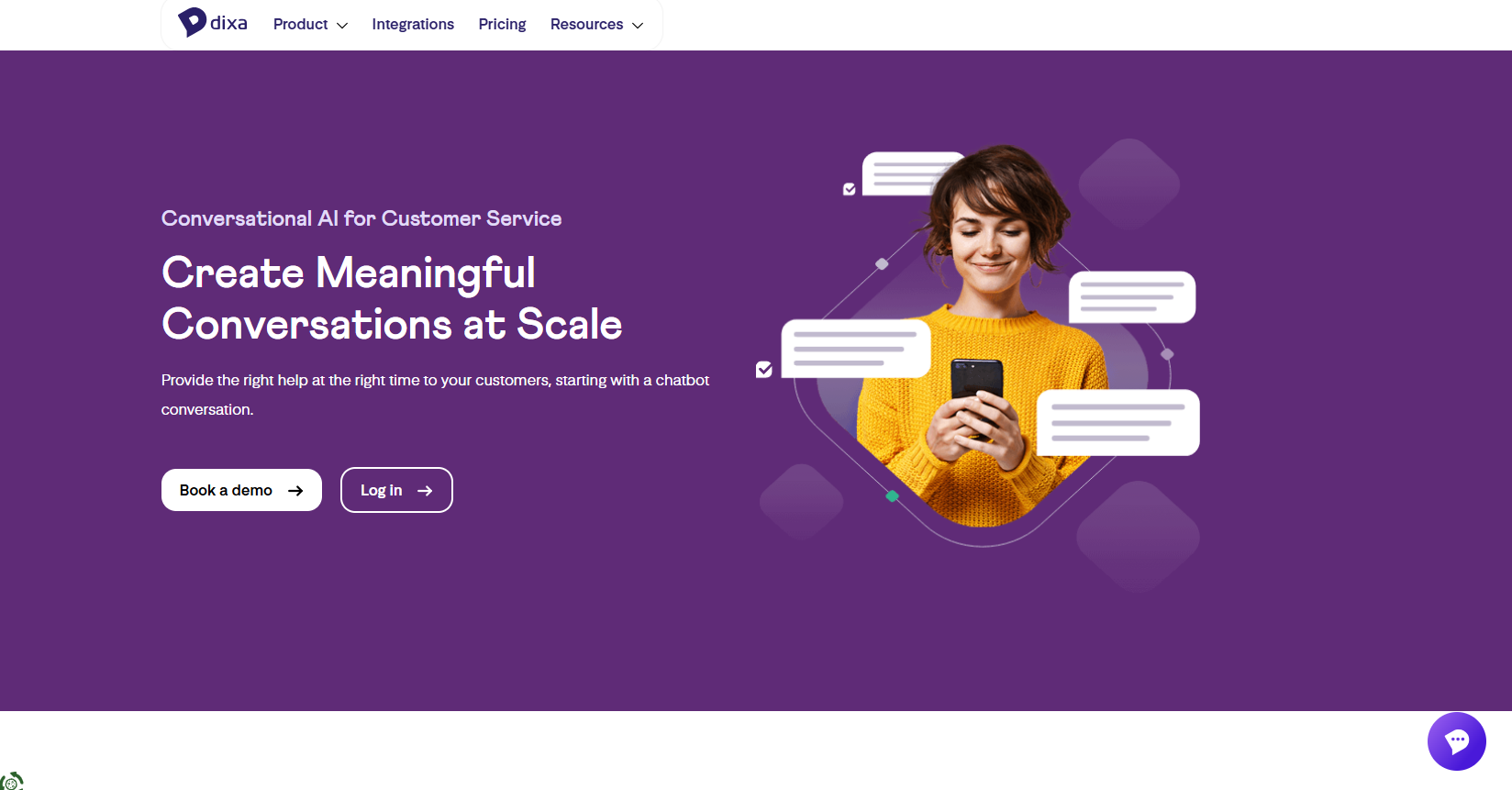
Best for: Automating customer support and policyholder self-service through contextual AI conversations.
- Key Features:
- Uses machine learning to understand customer intent and provide instant, accurate responses to common insurance inquiries such as policy coverage, claim status, billing, and renewals.
- Employs a “decision-tree” and natural language hybrid model that ensures precise answers while maintaining flexibility for complex queries.
- Integrates seamlessly with CRM systems, helpdesk software, and core insurance platforms to provide a unified customer view and automate repetitive service tasks.
Pros: Helps insurers dramatically reduce response times and improve first-contact resolution rates. It's easy to deploy, requires minimal IT effort, and is ideal for companies seeking to balance automation with personalized customer service.
Cons: More effective for structured queries than for highly complex or emotional interactions; optimal results require well-defined workflows and FAQs during setup.
3. ChatGPT Enterprise
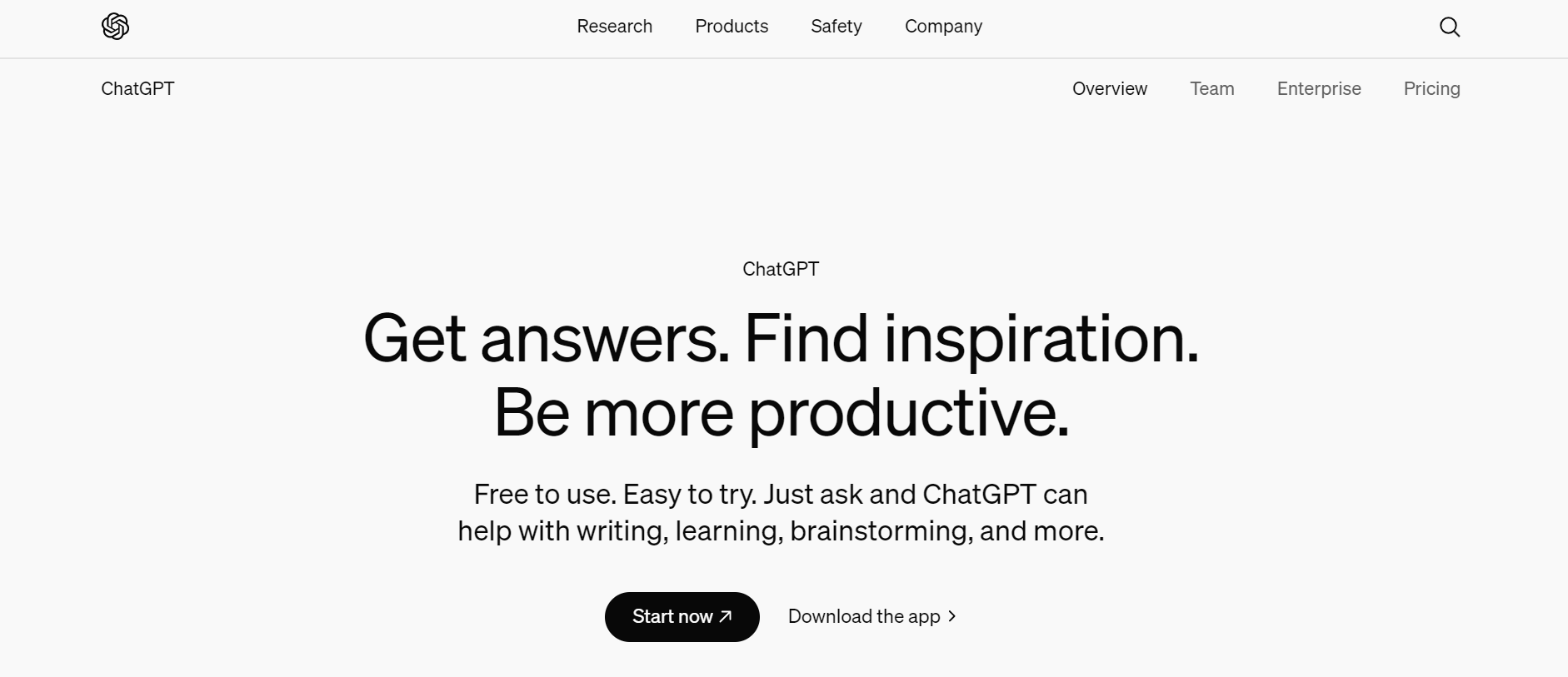
Best for: Internal knowledge management and content generation.
- Key Features:
- Can be trained on an insurer's private documents, policies, and procedures to act as an internal expert for agents and brokers.
- Helps generate training materials, summarize complicated policy documents, and draft customer communications.
- Ensures data privacy and security for sensitive company information.
Pros: Highly versatile, powerful language understanding, and provides a secure environment for internal company data.
Cons: Requires careful setup and training to ensure it provides accurate information; not an out-of-the-box conversational agent for customer-facing interactions.
4. LivePerson
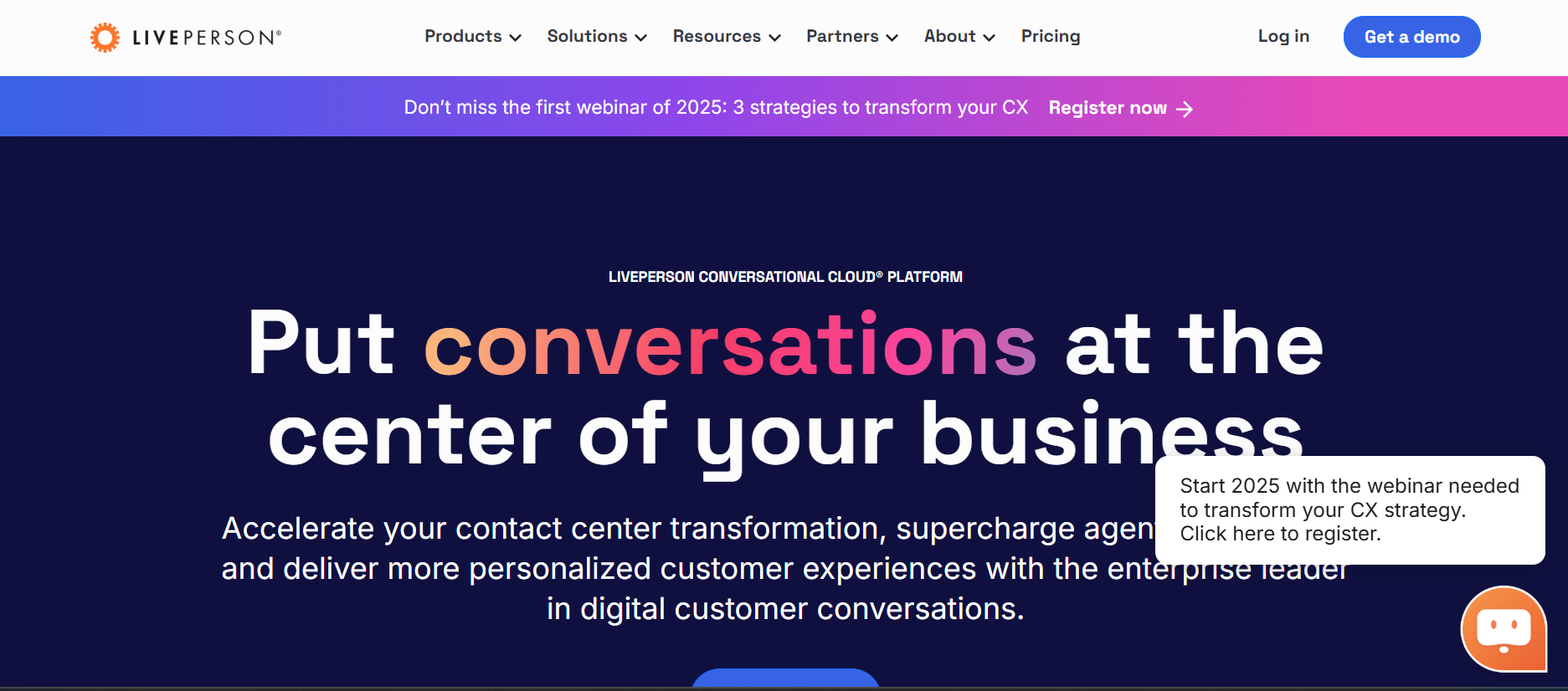
Best for: Enterprise-grade conversational AI and analytics.
- Key Features:
- Provides advanced AI analytics to help insurers understand policyholder behavior and the outcomes of conversations.
- Manages multichannel conversations, including web, mobile apps, and SMS.
- Uses AI to automate both sales and customer support conversations at a large scale.
Pros: Strong analytics capabilities, highly scalable for large insurance companies, and has a proven track record in the industry.
Cons: Pricing is not publicly available; can be complex to set up and implement.
5. Intercom
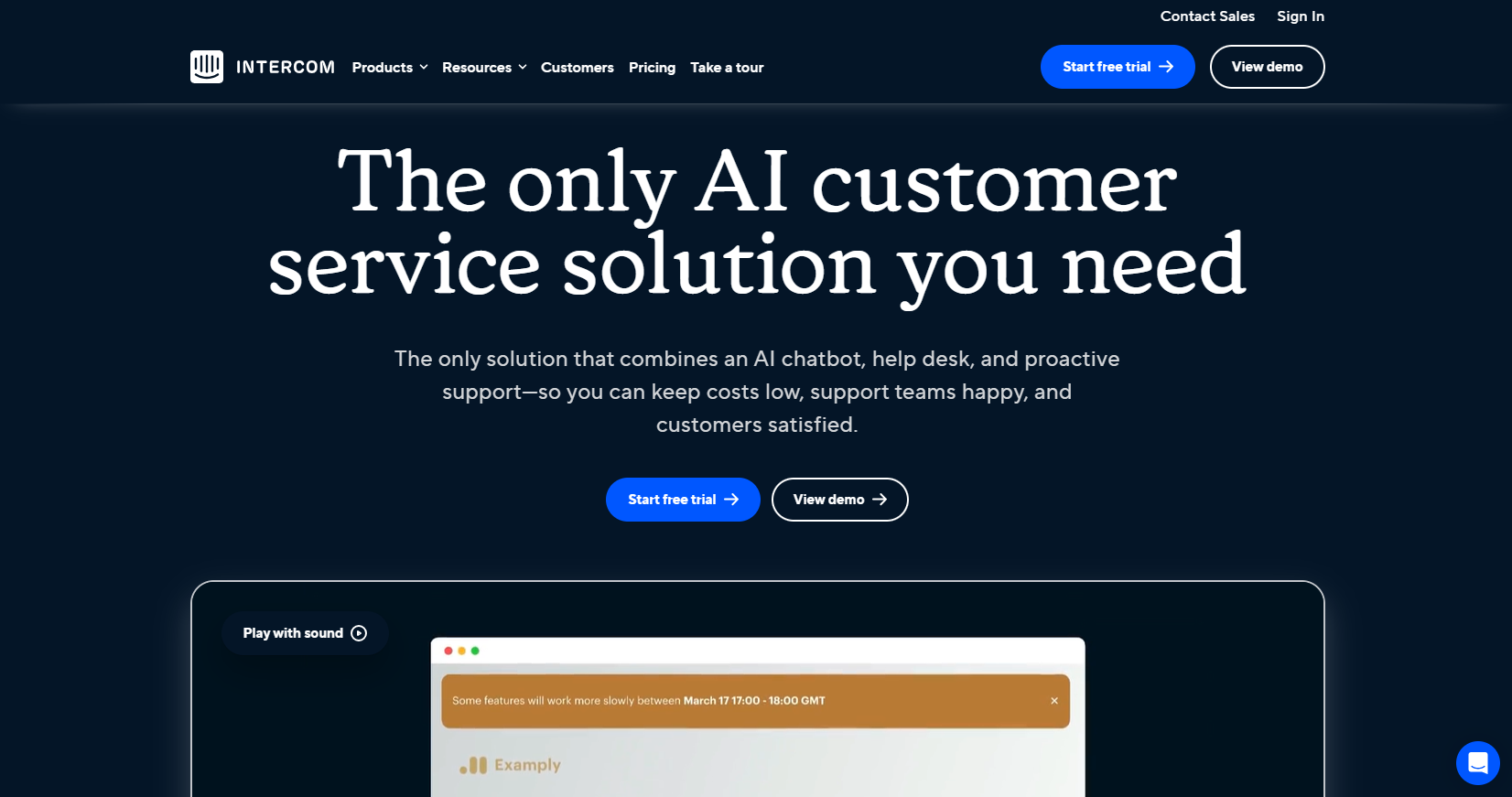
Best for: Proactive customer engagement and lead qualifications.
- Key Features:
- Specializes in proactively engaging website visitors to guide them toward getting a quote or finding information.
- Automates lead qualification by asking targeted questions and routing high-value prospects directly to sales agents.
- Integrates with a wide variety of business tools to create a smooth workflow.
Pros: Excellent for sales and marketing teams, has a user-friendly interface, and offers strong features for customer engagement.
Cons: Pricing can become high for larger teams; may be less focused on post-sales customer support compared to other tools.
6. Tractable
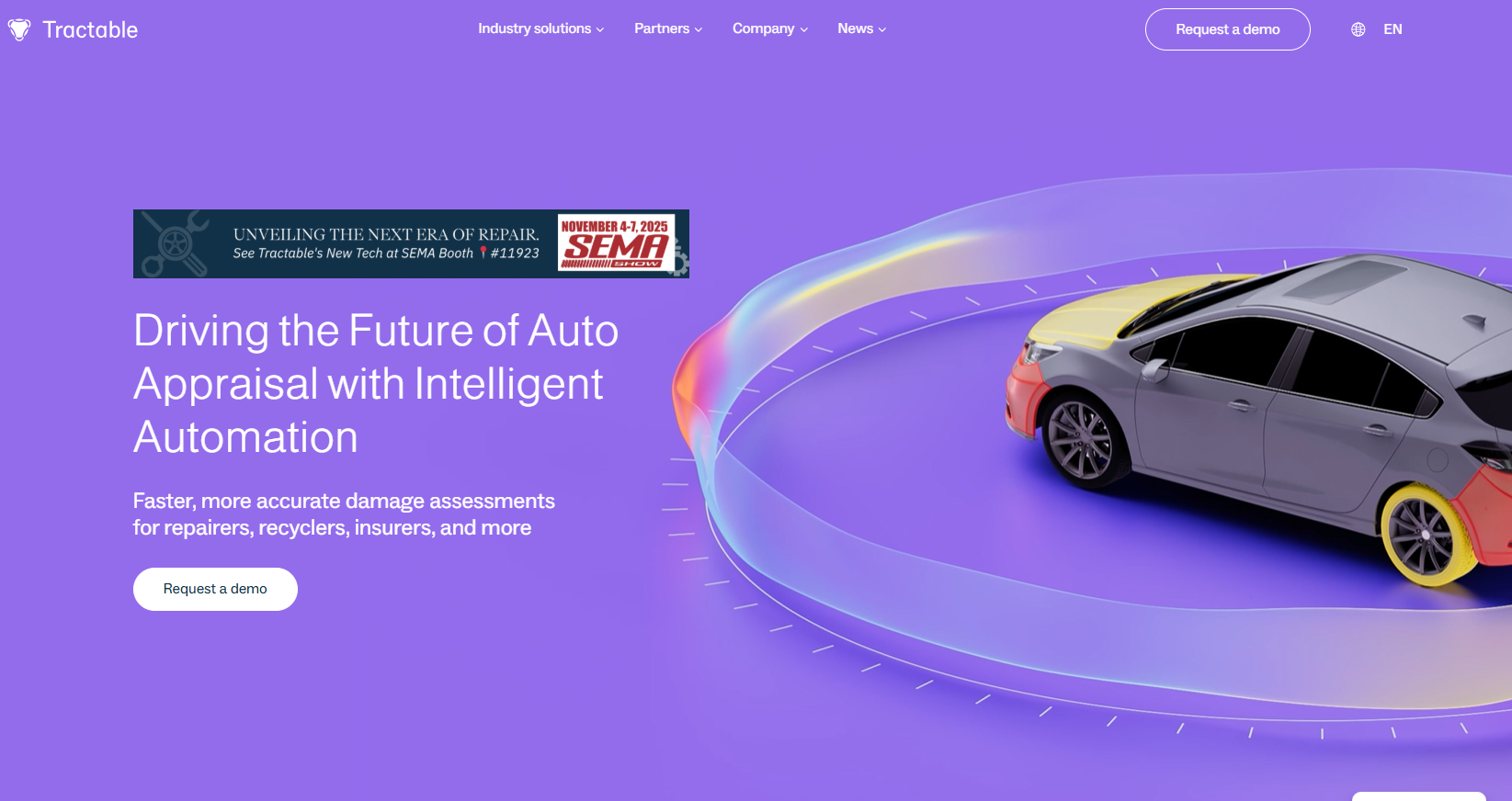
Best for: AI-powered auto claims assessment.
- Key Features:
- Uses computer vision (AI for images) to analyze photos of vehicle damage and estimate repair costs in seconds.
- Integrates into the claims workflow, allowing chatbots or human agents to process auto claims much faster and more accurately.
- Helps reduce fraudulent claims and streamlines the entire claims process for policyholders. This is a great example of how a specialized AI tool can be integrated with a primary chatbot, a key strategy for success with AI in insurance.
Pros: Drastically speeds up auto claims processing, increases the accuracy of assessments, and improves satisfaction for the claimant.
Cons: Highly specialized for auto insurance; it is not a general-purpose chatbot for other types of queries.
7. Google Cloud Dialogflow (Powering Gemini)
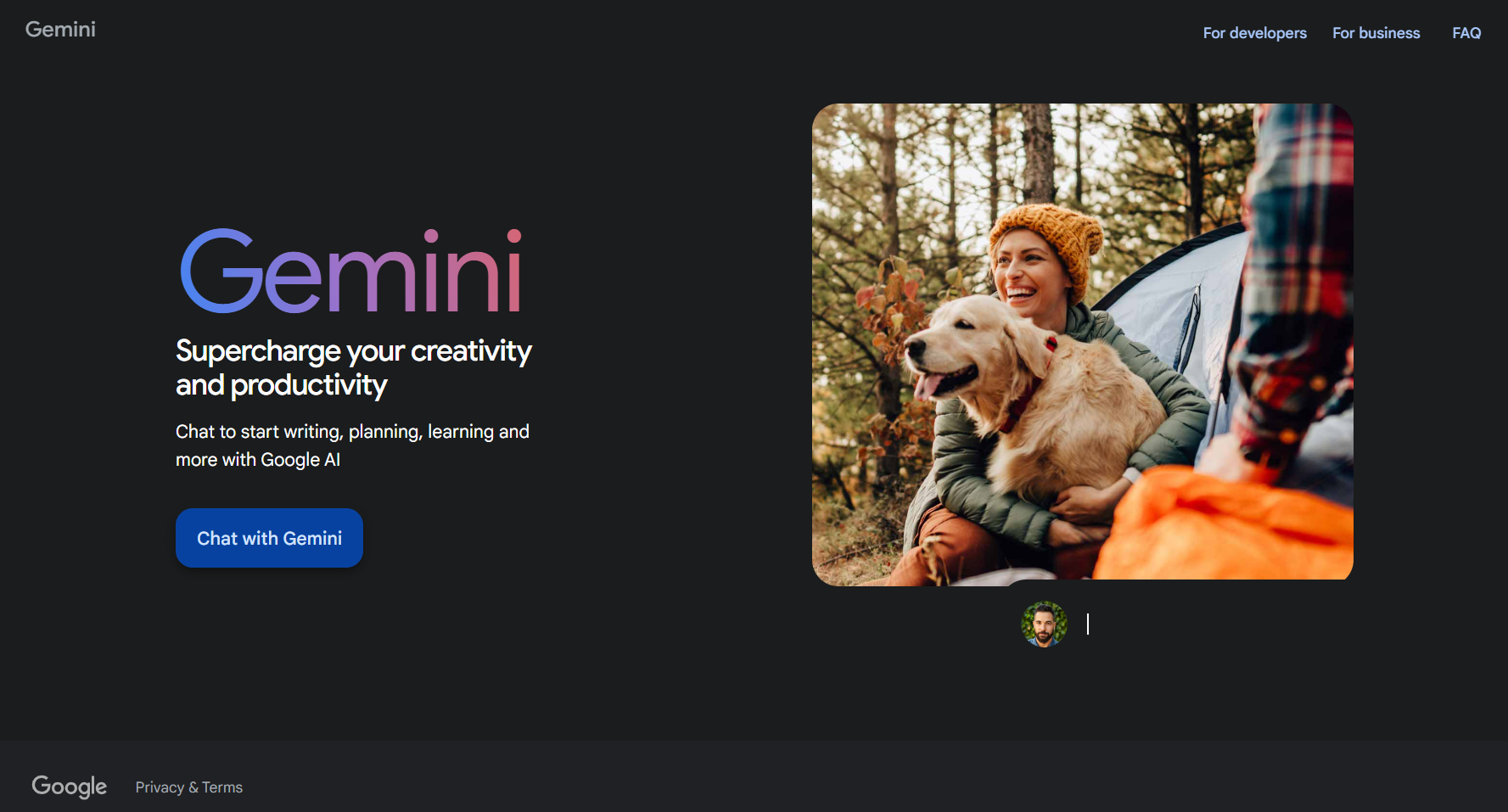
Best for: Building custom, scalable, and multimodal chatbots.
- Key Features:
- Allows insurers to build their own unique, branded chatbot with advanced natural language understanding.
- Supports "multimodal" interactions, meaning it can understand text, voice, and even images (for example, a user could submit a photo of property damage).
- Highly scalable and integrates well with the broader Google Cloud ecosystem.
Pros: Extremely flexible and powerful, supports multiple languages and channels, and benefits from Google's cutting-edge AI research.
Cons: Requires significant development resources to build and maintain a custom chatbot solution.
8. Tidio Lyro

Best for: Small to medium-sized insurance agencies and brokerages.
- Key Features:
- An AI-powered chatbot designed for very easy implementation on a company website.
- Can handle common customer questions, generate new leads, and offer personalized support.
- Its affordable pricing structure makes it accessible for smaller businesses without a large budget.
Pros: Easy to set up, cost-effective, and great for lead generation and basic customer support.
Cons: May lack the deep integrations and advanced features that are required by large insurance carriers.
9. Konfuzio

Best for: Document verification and fraud detection in claims.
- Key Features:
- An AI tool that specializes in reading and verifying documents like invoices, receipts, and identification cards.
- Helps automate the document-checking part of the claims process, saving time and reducing errors.
- Can identify tampered or fraudulent documents to help reduce financial losses.
Pros: Highly accurate document processing and powerful fraud detection capabilities.
Cons: A specialized backend tool that works behind the scenes; it is not a customer-facing chatbot itself but a key component of a fully automated claims system.
10. Claude
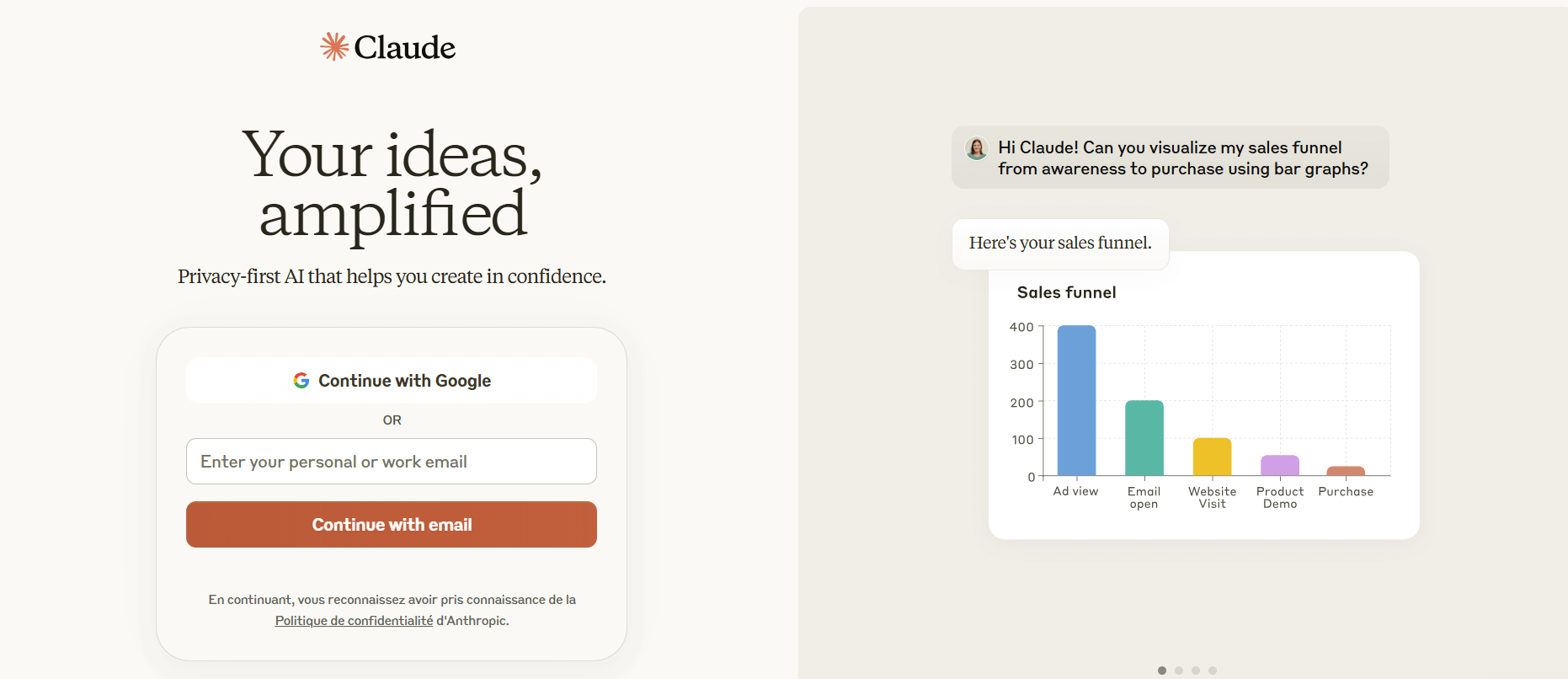
Best for: Handling complex conversations and summarizing information.
- Key Features:
- Excels at maintaining context over long conversations, making it ideal for walking customers through complex processes like filing a multi-step claim.
- Can summarize large documents (like policy terms and conditions) into easy-to-understand language for customers.
- Known for its focus on safety and producing reliable, helpful responses.
Pros: Strong conversational abilities, excellent summarization skills, and has a free tier available for testing.
Cons: Newer to the market than some competitors; its enterprise-level features are still evolving.
Our AI assistant provides contextualized and personalized responses, lightening your team’s workload.
Why a Chatbot for Insurance is Crucial in 2026
AI chatbots are no longer just a nice-to-have feature; they are a necessity for insurance providers who want to be more efficient, lower their costs, and keep policyholders happy. These digital assistants are excellent at handling common challenges, such as managing a high volume of customer questions, being available 24/7, and automating simple, repetitive tasks. By using AI in the insurance sector, companies can transform how they operate and engage with customers.
Elevating the Policyholder Experience
One of the biggest advantages of a chatbot is its ability to provide instant support. Policyholders can get 24/7 answers to frequently asked questions about their policies, premium payments, and coverage details. A well-designed FAQ chatbot can handle these common queries without needing a human agent.
Furthermore, chatbots can guide potential customers through the process of choosing the right insurance policy. By asking a few simple questions, the chatbot can gather information and offer personalized recommendations that fit the user's needs. This immediate and consistent support is essential for improving customer satisfaction and encouraging long-term loyalty.
Streamlining Claims and Underwriting
Filing an insurance claim can be stressful, but LLM chatbots can make it much easier. They can automate the "first notice of loss" (FNOL), which is the initial report filed after an incident. The chatbot can collect key information and documents from the claimant right away, starting the process without any delay.
AI is also very effective at pre-processing claims and can even help detect fraud by spotting unusual patterns in the data submitted. In fact, insurers see a significant return on investment when using AI for fraud detection [3]. For new policies, chatbots can pre-qualify potential customers by gathering the necessary information, which speeds up the underwriting process for agents.
Boosting Operational Efficiency and Reducing Costs
By automating routine questions and tasks, chatbots free up human agents to focus on more complex issues and build stronger relationships with customers. This not only makes the business run more smoothly but also reduces operational costs. It allows insurance companies to allocate their resources more effectively, ensuring that skilled agents are working on high-value tasks. These tools fit perfectly into a larger, more efficient system, like an AI-supported insurance customer engagement platform, creating a better workflow for everyone.
How to Choose the Right Chatbot for Insurance
When selecting a chatbot for your insurance business, it is important to consider several key factors to ensure you make the right choice.
- Define Goals: First, determine the primary reason you need a chatbot. Is it for generating sales leads, providing customer service, streamlining claims processing, or helping your internal team? Your goal will guide your decision.
- Integration: Ensure the chatbot can connect with your most important systems, such as your CRM, claims management software, and communication platform. A platform like Ringover is built with integration in mind, allowing all your tools to work together seamlessly.
- Security and Compliance: The insurance industry handles sensitive customer data, so security is critical. Verify that the chatbot platform is compliant with industry regulations like GDPR and has strong security measures to protect policyholder information. This remains a key challenge for the market [6].
- Scalability: Choose a solution that can grow with your business. The chatbot should be able to handle an increasing number of customer questions and adapt to your changing needs over time.
- Analytics: A good chatbot should provide data on its performance. Look for a tool that offers analytics on user interactions, common questions, and resolution rates to help you refine your customer service strategy.
Conclusion: Embracing the Future of Insurance with AI
AI chatbots are an indispensable part of the insurance landscape, helping companies improve customer satisfaction and achieve operational excellence. The right chatbot can transform claims processing, enhance customer engagement, and provide a significant competitive advantage in an industry that is rapidly being reshaped by AI [4].
For insurance companies looking to thrive, the time has come to move from simply experimenting with AI to strategically implementing it across the business. A comprehensive communication platform like Ringover provides the AI-powered tools needed to automate support, analyze conversations for deep insights, and empower your agents to deliver world-class service. Curious to try out Ringover's AI Assistant? Book an appointment with one of our team members today!
Chatbot for Insurance FAQ
What is an insurance bot?
An insurance bot (or insurance chatbot) is an AI-powered virtual assistant designed to help customers and insurance agents with a wide range of tasks. These bots can answer policy-related questions, help customers file or track claims, provide instant quotes, process payments, and even qualify new leads.
Modern insurance chatbots integrate with CRM and policy management systems to deliver personalized responses, ensuring 24/7 customer service while reducing the workload on human agents.
Which AI technique is most used in chatbots for customer service in insurance?
The most commonly used AI techniques in insurance chatbots are Natural Language Processing (NLP) and Machine Learning (ML).
NLP allows chatbots to understand and interpret human language, whether spoken or written, so they can respond naturally and contextually.
Machine Learning helps these bots continuously improve by learning from past conversations, user intent, and customer feedback.
Together, these techniques enable chatbots to provide accurate, human-like responses and handle increasingly complex customer interactions.
Which is better, ChatGPT or chatbot AI?
The answer depends on your goals:
- ChatGPT (from OpenAI) is a general-purpose conversational AI with powerful language understanding and reasoning abilities. It's ideal for generating text, summarizing policies, and assisting with internal knowledge management or training.
- Traditional chatbot AI platforms (like Ringover AI Assistant, Solvemate, or Dialogflow) are purpose-built for customer interaction. They excel at automating repetitive insurance processes, integrating with CRM systems, and maintaining compliance with data security requirements.
In practice, many insurers combine both–using ChatGPT for knowledge management and chatbot AI for customer-facing automation.
How can AI be used in insurance?
AI is transforming the insurance industry across multiple areas:
- Customer Service: AI chatbots provide instant support, 24/7, reducing response times and improving customer satisfaction.
- Claims Processing: Tools like Tractable use AI vision to assess vehicle damage and accelerate claims approval.
- Fraud Detection: AI systems like Konfuzio analyze documents and detect anomalies to prevent fraudulent claims.
- Underwriting and Risk Assessment: Machine learning models analyze historical data to assess risk more accurately.
- Agent Performance and Training: Solutions like Empower by Ringover analyze calls and provide actionable coaching insights.
Overall, AI enables insurers to boost efficiency, improve accuracy, reduce costs, and deliver a more personalized customer experience.
Citations
- [1]https://forrester.com/blogs/insurance-predictions-2026-significant-shifts-in-cx-ai-and-microinsurance
- [2]https://sortspoke.com/blog/deloitte-2026-global-insurance-outlook-ai-trends
- [3]https://deloitte.com/us/en/insights/industry/financial-services/financial-services-industry-outlooks/insurance-industry-outlook.html
- [4]https://mckinsey.com/industries/financial-services/our-insights/the-future-of-ai-in-the-insurance-industry
- [5]https://openpr.com/news/3942549/insurance-chatbot-market-to-reach-4-5-bn-globally-by-2032-with
- [6]https://dimensionmarketresearch.com/report/insurance-chatbot-market
Published on November 5, 2025.



